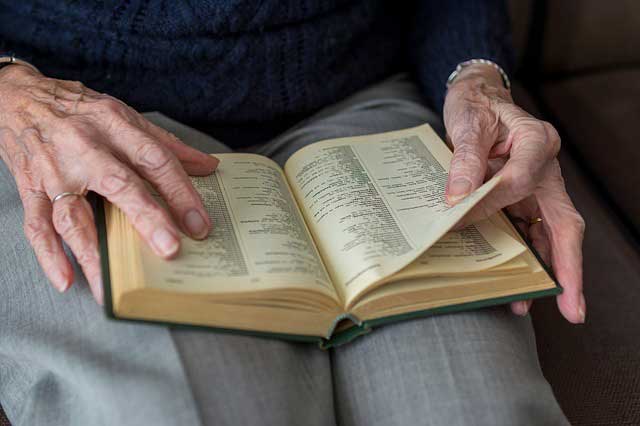Is it possible Paul is referring to a woman and not women in general? It’s possible. For certain? Nothing is for certain in this text. That’s why it’s created a couple thousand years of challenge. But let’s continue on in the study:
11 A woman[a] should learn in quietness and full submission. 12 I do not permit a woman to teach or to assume authority over a man;[b] she must be quiet. 13 For Adam was formed first, then Eve. 14 And Adam was not the one deceived; it was the woman who was deceived and became a sinner. 15 But women[c] will be saved through childbearing—if they continue in faith, love and holiness with propriety.
11 A woman should learn in quietness and full submission. 12
There are two things to note here. First the term “should learn” is actually poorly translated. It actually is an imperative meaning “must learn.” We forget how startling this text was for a first century woman.
As we saw in 1 Cor 14, this term “quietness and submission” when used together was often the description of a proper student. If this is the case, what Paul was saying was that a woman (or a specific woman) should learn like everyone else learns–respectfully, listening and in the mode of a student and not as someone who is disruptive.
“I do not permit a woman to teach or to assume authority over a man; she must be quiet”
This text has some challenges.
1) The word translated “authority” here in the Greek is not the usual word for authority. The usually word for “authority” is used often, but not here. If Paul wanted to make it clear with “authority” he could have. But instead the particular word he used is the only time it is ever used in the Bible. It gets harder. It’s a word that is hardly ever used anywhere else at the time too. Translators just don’t know how to translate it because it isn’t used. So they took their best guess with “authority.” We just don’t know.
2) “Quiet.” As we saw in 1 Cor 14 the word didn’t mean that a woman never spoke, but that she needed to be peacable. Respectful. And honoring one another in the worship service.
3) “I do not permit a woman to teach.”
If the issue is a “woman” and not women in general, it makes sense. The reason Paul was writing Timothy was that there were false teachers in their midst. If this was the case, then clearly he was telling this false teacher woman that she was not to teach any longer. She was not to contribute to the body in such a way to malign them further. She needed more training and teaching and therefore she “must learn.”
Did this mean women couldn’t teach ever, at all time, anywhere? Or only to kids or other women?
Here is what influences and shapes the picture:
- In 2 Tim 2:2 he says “the things you have heard me say in the presence of many witnesses entrust to reliable men (anthropos) who will also be qualified to teach others.” Even though the NIV says “men” the Greek is anthropos which is “people” or “mankind.” If ever he wanted to make clear that only men were to teach he could’ve easily used the common word for men – aner. But he didn’t.
. - Col 3:16 – “Let the word of Christ dwell in you richly as you teach and admonish one another with all wisdom…” This verse encourages all and everyone to teach and admonish one another. Some may say that the letter was written to the “brothers.” But “brothers (adelphoi) in Greek was both men and women. And we know that this was written to both men and women as we see in the very next section an injunction to wives. It says “teach and admonish each other” and there is no gender distinction.
. - The gifts that the Lord gave are not gender specific. One of those gifts is teaching (Rom 12:7).
. - He let Priscilla teach a man without any known rebuke (Acts 19:24-48)
. - He upheld Timothy’s mother and grandmother as teachers of the faith to Timothy (2 Tim 1:5)
. - He did not use the word “women” can’t teach but “a woman,” perhaps implying that there was one problem woman (1 Tim 2:12).
Summation
The problem again is thinking in terms of our current structure of “church.” When we think of a woman teaching we think of her taking over the role of The Pastor. The early church did not have this form of structure. Think living rooms, courtyards, in circles, everyone sharing their gift for the strengthening of the body. Including women. Women that taught. So yes, I believe Priscilla taught for the strengthening of the body and women taught in the gathering of the believers. And that there was probably a man presiding over it all.
But what about Paul’s reference Adam and Eve?
More in the next post.







